"Today, we need affordable housing that is also attractive"
Ilka Ruby on the paradigm shift in social values that is also reflected in modern architecture
Basel, 6 June 2017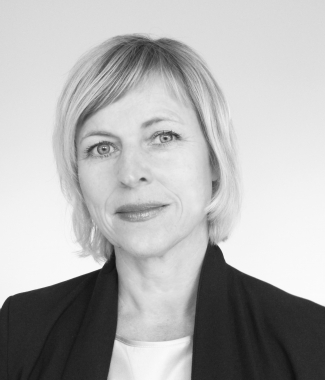
Just a week before she delivers the keynote speech at the conference organized by Housing Europe and Aedes as part of the International Social Housing Festival, and only a few days after the official opening of the acclaimed exhibition 'Together! Towards the New Architecture of the Collective' at the Vitra Design Museum- that has been attended by Housing Europe-, Publisher and Curator, Ilka Ruby took time for a quick round of 5 Questions! How does our society change and how is this reflected on Architecture? What is changing in the way we live together? Why is collectivity a recurring theme in history? Have a seat around the table with us for an inspiring exchange with Ilka Ruby...
Interview: Michalis Goudis
What are the core elements of this ‘New Architecture of the Collective’?
The new collective housing projects offer innovative layouts with a smaller average living area per person but more and larger collective facilities to the benefit of both the residents and the neighborhood. This shift towards collectivity unfolds on three scales:
- On the scale of the individual flat we see the emergence of the type of the cluster apartment. It consists of a number of small studio apartments of about 20-35 sqm with a bedroom, small kitchen and bathroom, which are organized around a shared living environment with generous living area and a large kitchen. This type enables singles to share their daily lives to a certain extent with other people while guaranteeing them a private space where they can retreat to whenever they need.
- On the scale of the apartment building we see the emergence of a type which apart from the apartments features an eclectic mix of shared domestic facilities that can be used collectively by all inhabitants. The new cooperative housing projects in Switzerland for instance typically include a laundry, a library, seminar spaces, workshop spaces, spaces where children can play, and, most importantly, a collective kitchen with a hired cook who prepares meals daily for all who don’t want to cook and eat individually in their homes, but would rather do so together with others.
- On the scale of the urban space we see the emergence of apartment buildings which offer public programs that explicitly cater to people living in the neighbourhood. The celebrated Kalkbreite housing cooperative in Zurich- you may see the presentation in the Housing Europe conference last year (Ed.)- which has dedicated 50 % of its development project to non-residential functions, offers public facilities such as a cinema, a packaging-free supermarket, three restaurants/cafés, doctors’ cabinets, a number of office spaces as well as a public courtyard with playing areas for kids. In this way, the building opens up to the city and becomes a genuine part of the wider neighbourhood. Here housing actually makes the city.
In that sense, these new communally inspired projects are the critical antidote to the stereotypical mono-residential housing developments of the post-war era which tended to suffocate urban life thanks to the modernist dogma of functional separation. The architecture of shared housing inspires ways how we can foster the quality of urban life our cities by re-calibrating the relationship between private and public spaces. It argues for a city of high programmatic mix, combining housing, working, and leisure environments, and of an inclusive social stratification, mixing people of different income groups rather than segregating them spatially.
Why do you think this wave of collectives seems to be a recurring theme in history?
Because humans are “herd animals“. And they have lived for the longest time of history in larger communities. The family flat we have come to see as a standard of modern living is in fact a historical exception. In that sense, the new collective housing communities only reconnect to traditional collective forms of living such as multi-generational households of pre-industrial societies where three generations live under one roof which allowed for a daily division of labour and caretaking for its individual members.
The industrial revolution has dissolved these forms of collective living in favour of two generation households, parents and kids, and in the post-industrial society we see a large increase of one-generation single households. Today, 60 % of the population in western societies liveS in one or two-person-households. This has increased feelings of loneliness and social isolation among many people both old and young. And they are looking for ways to satisfy their need for belonging and social interaction in their every day life, and the new collective housing communities give them the typological vessels to realize this kind of togetherness in new ‘families of choice‘ which are not biologically bound.
The exhibition gets a global perspective. Would you have a good example you would particularly like to share?
This is very difficult, since there are so many. One pilot project that still serves as an inspiration for many collective housing projects today is the Sargfabrik (coffin factory) project in Vienna. It was developed 20 years ago by a group of people who wanted to live together and share facilities such as a pool, a music club, a restaurant, a kindergarden etc not only among themselves but also with the people of the neighbourhood. All these collective programs would not have been elegible for social housing funds then – meaning social housing in fact wasn’t social at all – which is why the group named their project a dormitory. By doing so they could get funding for all kind of collective programs like a collective kitchen, that then became the restaurant or collective bathrooms, which became the swimming pool and sauna.
Very innovative recent examples are the cooperative housing projects Kalkbreite in Zurich or Mehr als Wohnen- a winner at the World Habitat Awards (Ed.). Developed by a network of more than 50 cooperatives and consisting of 13 houses that form a neighborhood, it develops the sharing idea in housing further, also in terms of scale.
Do you think that Architecture echoes societal changes/needs or does it shape them to a certain extent, too?
Architecture is made for people, so yes, it has to take up social needs. But by providing the physical form, the interfaces between public and private, by inventing new typologies for living, working, and leisure activities it also shapes and fosters these social changes and the way people interact. Over the past decade we have seen a growing social movement espousing collectivity, sharing, and participation. This paradigm shift in social values can be seen in architecture as well. In recent years, increasingly innovative collective housing projects have emerged, many of them conceived and realised through grassroots initiatives, by people who wanted to live together differently.
But the housing market did not provide the appropriate projects for them, since it often still caters to the traditional family, which today isn’t the norm anymore. There is a growing number of single households, of single parents with kids, of elderly people, that are looking for a sense of community beyond the traditional family. Together with architects these people developed often in a participatory process new architectural concepts.
If Ruby Press had to publish a book about the future of affordable housing, what would this book be like?
Many of our books are dealing with the topic of affordable housing, for example Housing Cairo or Minha Casa Nossa Cidade. In Housing Cairo. The Response we look at the architecture of informality and its mechanisms of production through a series of theoretical essays and architectural design proposals. As the book argues, Cairo’s informal response to housing needs is not a marginal phenomenon, but rather an intelligent, optimized answer to planning incapacities – an answer that architects and planners should themselves be participating in. Minha Casa Nossa Cidade examines the social housing program “Minha Casa, Minha Vida” (“My House, My Life”), which aimed to build 3.4 million housing units, and presents ways to improve its design and implementation.
But the question is never just about affordability, but also quality of life overall. In the past housing was often made affordable by lowering the standards of housing, which has discredited social housing and given it a particularly negative reputation. Today, we need affordable housing that is also attractive, where people want to live in because its worth living. It has to make a kind of common luxury available to its residents, in particular shared uses where residents can experiences themselves as members of a community and which are also accessible, at least in part, to people from the neighborhood. Affordable housing cannot be residential only, but has to entail activities for leisure and training so that the building becomes an integral part, and not a time-out, of the city.
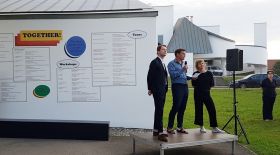
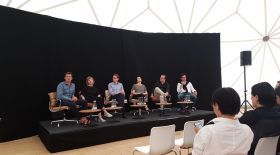
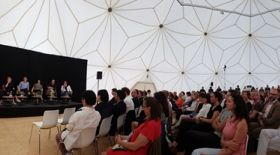
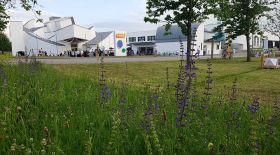
Leave comments